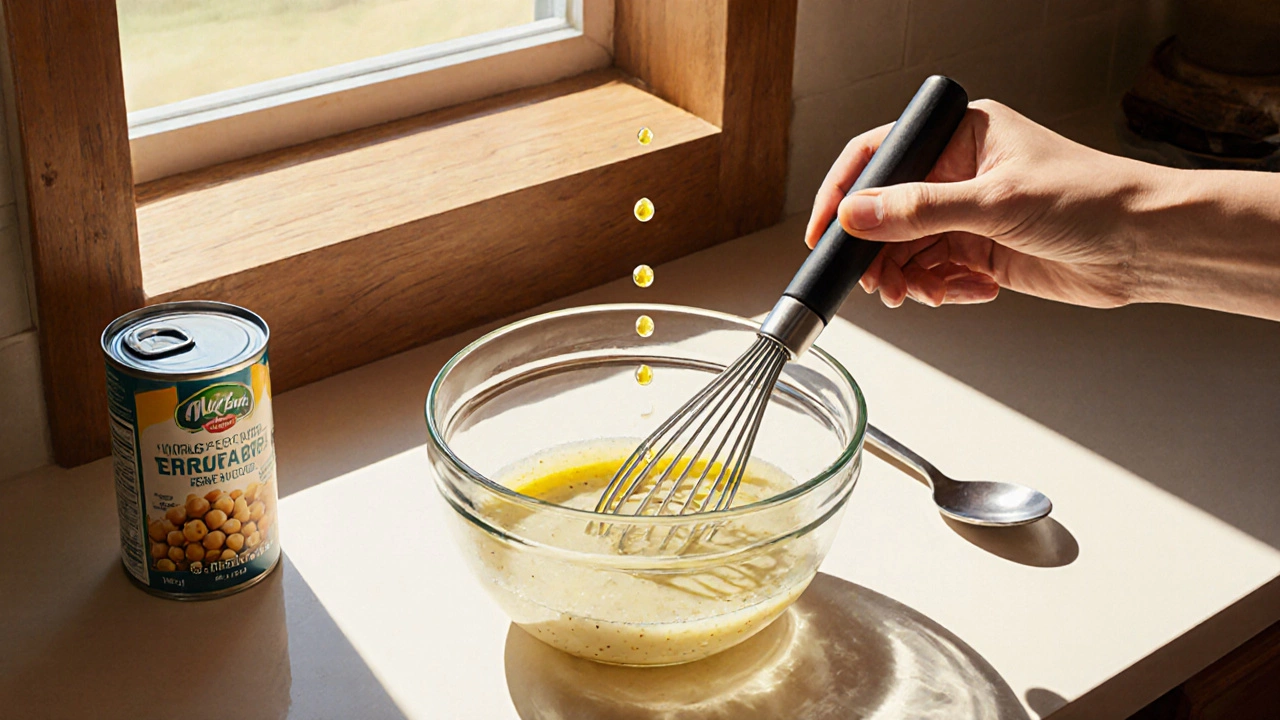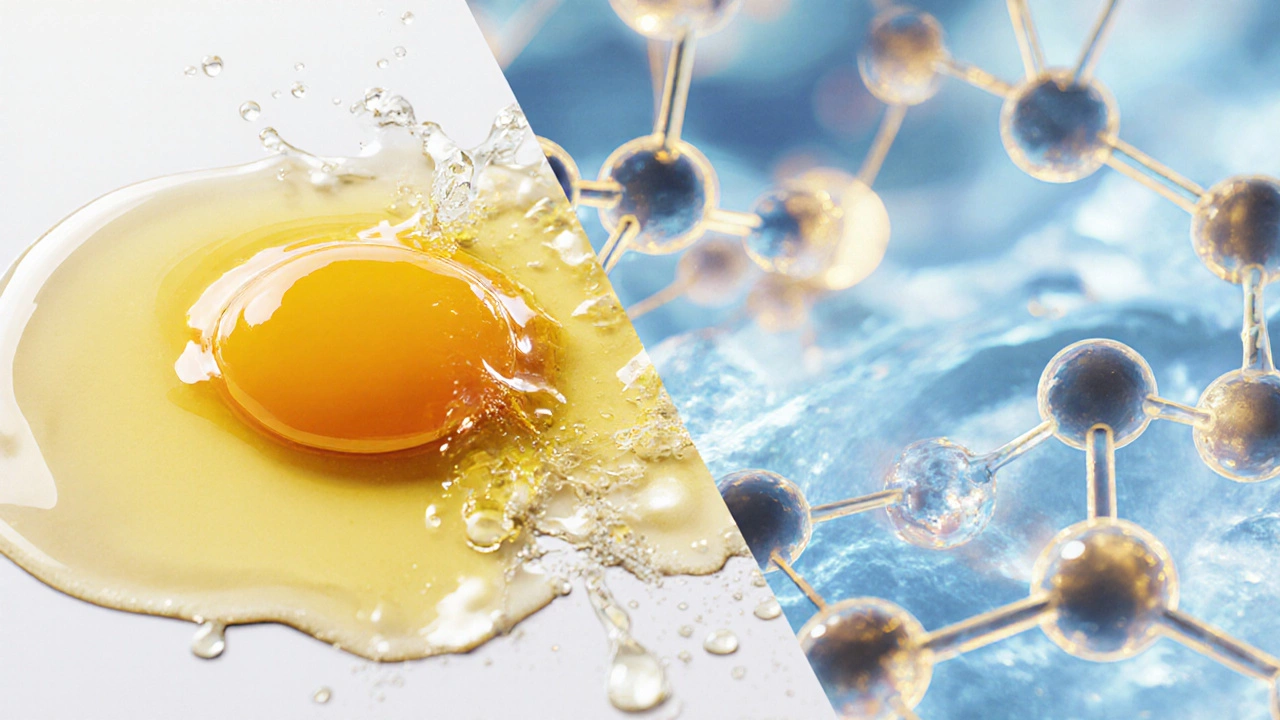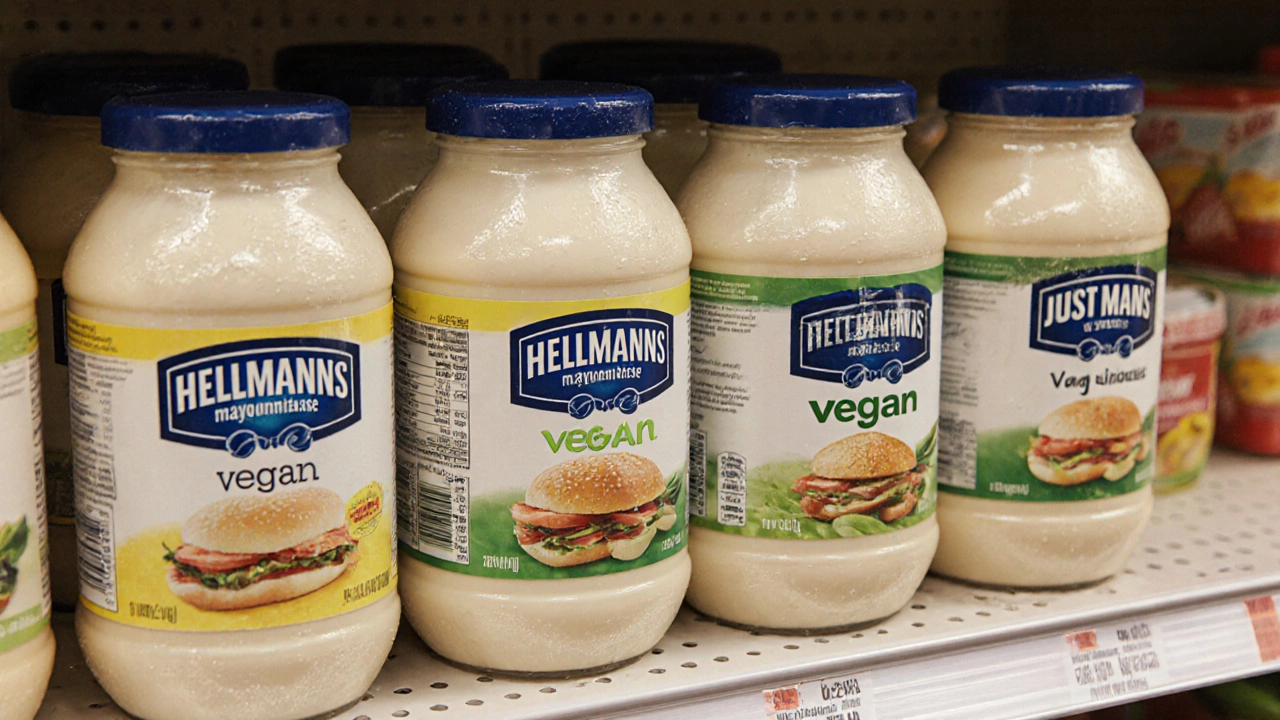Most people assume mayonnaise is just eggs and oil - and if you’re vegan, that means it’s off-limits. But here’s the twist: you can find vegan mayonnaise on every supermarket shelf in the UK now. It’s not some niche health food. It’s sitting right next to the regular kind, often in the same aisle. So why does this question still come up? Because labels lie. And not all mayo labeled "egg-free" is actually vegan.
What’s in regular mayonnaise?
Traditional mayonnaise is made with three things: egg yolks, oil, and vinegar or lemon juice. The egg yolk acts as an emulsifier - it’s what holds the oil and water-based ingredients together so you don’t end up with a separated mess. That’s why egg yolks are non-negotiable in classic recipes. If you’re avoiding animal products, that’s a problem. Even if you don’t eat meat, eggs are still an animal product. And that’s the core issue for vegans.
But here’s what most people don’t realize: you don’t need eggs to make a creamy, tangy spread. The food industry figured that out years ago. Now, brands use plant-based emulsifiers like soy lecithin, aquafaba (chickpea brine), or even pea protein to do the same job. The texture? Just as thick. The taste? Close enough that most people can’t tell the difference in a sandwich.
What makes mayonnaise vegan?
A vegan mayonnaise skips the egg entirely. Instead, it uses one or more of these plant-based alternatives:
- Soy lecithin - a natural compound extracted from soybeans. It’s the most common emulsifier in store-bought vegan mayo.
- Aquafaba - the liquid from a can of chickpeas. Yes, really. It whips up like egg whites and binds oil beautifully.
- Pea protein - used by newer brands like Just Mayo. It mimics the mouthfeel of egg yolks surprisingly well.
- Starches - like tapioca or potato starch - add thickness without animal ingredients.
Check the ingredient list. If you see "egg" or "egg yolk," it’s not vegan. But if you see "soy lecithin," "chickpea brine," or "pea protein," you’re good. Also watch out for hidden dairy. Some brands add milk derivatives like lactose or casein to improve texture. That’s not vegan either.
Which brands are actually vegan?
Not every brand that calls itself "egg-free" is vegan. Here’s what you’ll find on UK shelves in 2025:
| Brand | Base Ingredient | Contains Soy? | Gluten-Free? | Available in UK Supermarkets |
|---|---|---|---|---|
| Hellmann’s Vegan | Soy lecithin | Yes | Yes | Waitrose, Sainsbury’s, Tesco |
| Just Mayo | Pea protein | No | Yes | Whole Foods, Ocado |
| Vegenaise | Soy lecithin | Yes | Yes | Ocado, health food stores |
| Asda Plant-Based | Pea protein | No | Yes | Asda |
| Co-Op Vegan | Aquafaba | No | Yes | Co-Op stores |
Hellmann’s Vegan is the most widely available. It’s made by the same company as the original, so if you grew up with that taste, this version feels familiar. Just Mayo has a slightly tangier kick - great for salads. Vegenaise is thicker and richer, perfect for dipping. And Co-Op’s version, made with chickpea brine, is the most affordable at around £1.50 per jar.
Can you make vegan mayo at home?
Yes. And it’s easier than you think. You don’t need a fancy blender. A regular hand mixer or even a whisk will work.
Here’s a simple recipe that takes five minutes:
- Whisk 2 tablespoons of aquafaba (from a can of chickpeas) until frothy.
- Slowly drizzle in ½ cup of neutral oil (like sunflower or canola) while whisking constantly.
- Add 1 tablespoon of lemon juice, ½ teaspoon of apple cider vinegar, ¼ teaspoon of salt, and a pinch of mustard powder.
- Keep whisking until thick and creamy - about 2 minutes.
It won’t last as long as store-bought (3-4 days in the fridge), but it’s free of additives, preservatives, and unnecessary packaging. And if you’re using canned chickpeas anyway, you’re already wasting the brine - this turns waste into dinner.

What about "vegan" mayo from fast food chains?
McDonald’s in the UK doesn’t offer vegan mayo. Their standard mayo contains egg. Same with Burger King and KFC. Some independent vegan cafes make their own mayo - ask if it’s egg-free and made with plant-based ingredients. Chain restaurants rarely disclose full recipes, so don’t assume.
Starbucks’ vegan sandwich spread? Not vegan. It contains egg-derived ingredients. Pret A Manger’s vegan mayo? Yes - it’s soy-based and clearly labeled. Always check the allergen info on their website before ordering.
Why does vegan mayo taste different?
It doesn’t have to. But sometimes it does. The difference comes down to oil type and emulsifier. Traditional mayo uses soybean or canola oil. Vegan versions often use the same. But some brands use olive oil for a "healthier" spin - that adds a strong, peppery flavor that can overpower sandwiches.
Also, egg yolks have natural fats and cholesterol that give mayo a rich, almost buttery mouthfeel. Plant-based emulsifiers can’t replicate that exactly. So some vegan mayos feel lighter or slightly watery. That’s why brands add starches or gums - to thicken it up. If your vegan mayo feels too thin, try chilling it for an hour. It firms up.
Pro tip: If you hate the taste of store-bought vegan mayo, try mixing it with a little nutritional yeast or smoked paprika. It adds depth. Or blend it with mashed avocado for a creamy, green spread that’s even more nutritious.
Is vegan mayo healthier?
It depends. Vegan mayo usually has less cholesterol - because it has no eggs. But it’s still mostly oil. That means it’s high in fat and calories. A tablespoon has about 90-100 calories, same as regular mayo. The difference isn’t in calories - it’s in ethics and ingredients.
Some vegan mayos are lower in saturated fat. Others use sunflower oil, which is higher in heart-healthy omega-6s. But if you’re watching your sodium, check the label. Some brands add more salt to compensate for the lack of egg flavor. Co-Op’s version has 180mg sodium per tablespoon. Hellmann’s Vegan has 160mg. Regular Hellmann’s? 120mg. So vegan doesn’t always mean lower salt.
The real health win? Making your own. You control the oil, the salt, and you avoid preservatives like potassium sorbate and calcium disodium EDTA - common in commercial brands.

Can you use vegan mayo in recipes?
Yes. It works in every way regular mayo does:
- Salads - potato salad, pasta salad, coleslaw
- Sandwiches - veggie wraps, vegan BLTs, eggless egg salad (made with mashed tofu)
- Dips - mix with herbs, garlic, or sriracha
- Baking - some vegan cake recipes use it as a fat substitute
- Marinades - blends well with plant-based proteins like tempeh or jackfruit
One pro trick: use vegan mayo instead of sour cream in vegan baked potatoes or as a base for dairy-free ranch dressing. It’s thicker, creamier, and holds herbs better.
What should you avoid?
Don’t trust labels that say "dairy-free" or "egg-free" without checking the full ingredients. Some products use casein (a milk protein) or whey to improve texture. These are animal-derived. Also avoid brands that list "natural flavors" - that term can hide animal-derived ingredients. Stick to brands that clearly list plant-based sources.
And watch out for cross-contamination if you have allergies. Some vegan mayos are made on shared lines with egg products. If you’re allergic, look for "made in a dedicated facility" on the label.
Final answer: Is mayonnaise vegan friendly?
Regular mayonnaise? No. But vegan mayonnaise? Absolutely - and it’s better than ever. You don’t have to sacrifice taste, texture, or convenience. Whether you buy it from Co-Op, make it at home with chickpea brine, or try Just Mayo for a bold flavor, there’s a vegan option that fits your palate and your values.
It’s not about replacing egg mayo with something "almost as good." It’s about choosing a product that aligns with your lifestyle - without compromise.
Is Hellmann’s vegan mayo really vegan?
Yes. Hellmann’s Vegan Mayo is made without eggs, dairy, or any animal products. It uses soy lecithin as an emulsifier and is certified vegan by the Vegan Society. It’s widely available in UK supermarkets and tastes very close to the original.
Can I use vegan mayo in baking?
Yes. Vegan mayo works as a fat substitute in some vegan cakes and brownies, especially when replacing butter or eggs. It adds moisture and richness. Use it in a 1:1 ratio, but keep in mind it has a slight tang - so it’s best in recipes where lemon or vinegar notes won’t clash.
Why does my vegan mayo taste weird?
It could be the oil. Some vegan mayos use olive oil or avocado oil, which have strong flavors. Try switching to a brand made with sunflower or canola oil. Also, if it’s homemade and too thin, it may not have been emulsified properly. Chill it for an hour - it often thickens. If it smells sour or off, it’s spoiled - vegan mayo doesn’t last as long as regular.
Is vegan mayo gluten-free?
Most are, but not all. Check the label. Some brands use modified food starch from wheat. Brands like Vegenaise, Just Mayo, and Co-Op Vegan are certified gluten-free. If you’re celiac, look for that certification.
How long does vegan mayo last?
Store-bought vegan mayo lasts 3-6 months unopened, and about 2 months after opening when refrigerated. Homemade versions last 3-5 days. Always check for separation, sour smell, or mold. If it looks or smells off, throw it out.

